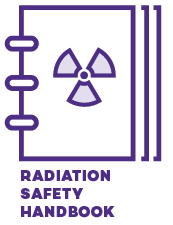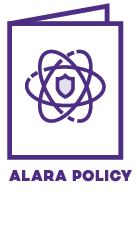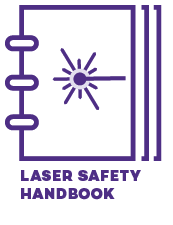Radiation Safety
Sources of ionizing and non-ionizing radiation are essential elements of research and teaching at Northwestern.
- Ionizing radiation sources include x-ray devices and radioactive materials (RAM) such as naturally occurring radioactive materials (NORM), sealed sources, and unsealed sources.
- Non-ionizing radiation sources include lasers and magnetic fields.
Look at the information below for more radiation safety information. If you have any questions, contact Radiation Safety at radiation-safety@northwestern.edu.
Documents
 |
 |
Ordering and Shipping Radioactive Materials
All radioactive materials ordered for use at Northwestern University must be approved by Radiation Safety. This includes items that do not need a license to be obtained, such as anti-static strips or uranyl acetate. Radiation Safety can answer questions about an investigator’s authorized limits or required information on radioactive materials orders.
If radioactive samples need to be shipped outside the University or between campuses, please contact Radiation Safety for assistance at least two weeks in advance.
Please note that the international import or export of any radioactive materials is a multistep process that will need to involve many university and third party services.
Only Radiation Safety is authorized to ship radioactive materials.
Radiation Emergencies
In the event an individual is contaminated
- Do not panic. Radioactive contamination can be removed
- Remove all potentially contaminated clothing. Set aside for collection by Research Safety
- For unprotected skin that may be contaminated, begin washing immediately with plenty of soap and warm water in the nearest sink
- Have a colleague contact Research Safety immediately
- Continue washing until help arrives, avoid scrubbing or damaging the skin
- If appropriate for the isotopes involved you may use a hand-held survey instrument as you wash, then monitor your progress
In the event of a spill that you can easily control
- Do not panic. The key objective is to limit the spread of potential contamination
- Warn others to stay away from any area that may be contaminated
- Survey your hands, sleeves and feet for potential contamination with a handheld survey meter
- Remove any contaminated garments - your lab coat, for example
- You may also take an initial set of swipes for low-energy isotopes. Set them aside for counting after the clean-up.
- With low-energy isotopes, always assume your gloves are contaminated and change them frequently
- Stop and limit the movement of the spill using absorbent bench paper, paper towels or wipes
- If the material is dry, use a damp paper towel or Kimwipe to facilitate pick-up
- Work from the least contaminated area (the perimeter of the spill) toward the most contaminated area.
- Place contaminated items in an Research Safety approved radioactive waste container(s).
- Follow established methods for decontaminating non-porous surfaces. Resurvey the area to measure effectiveness.
- Continue to clean and resurvey the surfaces until at or near background readings.
- Notify Research Safety for additional help and follow-up
If the spill is beyond your ability to control
- Do your best to limit the movement of spilled materials with absorbent paper, spill pads, etc. and isolate the area: notify Research Safety.
Radiation Safety Committee
The Radiation Safety Committee has the following responsibilities:
- Establish policy and standards of practice for the Radiation Safety Program
- Approve the use of radioactive materials
- Review radiation safety incidents, issues and violations, and recommend corrective actions
- Review a summary of the occupational radiation dose records and recommendations on ways to maintain doses as low as reasonably achievable (ALARA)
- Review the Radiation Safety Program to determine that all activities are being conducted in accordance with radiation safety policy, license conditions, and regulatory requirements
Documents
Emergencies
Eye Injuries
- Have a co-worker call 911 (if not available call 911 yourself)
Equipment Failure
- If safe to do so, shut off the power using the main disconnect
Laser Safety Committee
The Laser Safety Committee has the following responsibilities:
- Develop policies and procedures regarding laser safety within Northwestern.
- Review and grant permission for the use of Class 3b or 4 laser equipment for uses within the university.
- Outline the duties of the Laser Safety Officer.
- Ensure compliance with laser safety standards, including federal and state regulations, and non-regulatory standards as outlined in the American National Standards Institute (ANSI) Z 136 series of laser-safety standards.
- Investigate alleged infractions of safety rules or improper use of laser equipment and recommend remedial action.
Radiation Safety can assist in the measurement of static magnetic fields produced by various instrumentation used in biology, chemistry, engineering, physics and medicine. Radiation Safety has equipment which can measure low and moderate magnetic fields.
All equipment must be evaluated to determine the 5 Gauss (0.5mT) boundary. Please contact Radiation Safety when making significant changes to your instrument(s) that could alter the magnetic field within (or outside) your laboratory. Radiation Safety can also assist with appropriate signage.
Questions? Simply contact Radiation Safety.
- Chicago Campus: 312-503-8300
- Evanston Campus: 847-491-5581
